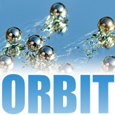Circles, frustums and cylinders revision
Lesson idea. Prologue:
Teaching approach. This resource offer students the opportunity to engage in active learning(ta) - measuring and calculating using large size cylinders and frustums. This lesson brings great opportunity for small group "dialogic teaching(ta)". Open-ended and closed questioning(ta) of students can be used to draw on their existing knowledge and extend their understanding. The teacher provides a practical commentary below. (edit)
| Resource details | |
| Title | Circles, frustums and cylinders revision |
| Topic | [[Topics/Area|Area]] |
| Teaching approach | [[Teaching Approaches/Questioning|Questioning]], [[Teaching Approaches/Dialogic teaching|Dialogic teaching]], [[Teaching Approaches/Active learning|Active learning]] The learning objectives are for students to be able to: Apply mathematics of circles and volumes to real objects. Assess measuring errors and work with ‘real life’ scale factors. Use a calculator for complex calculations.]]
|
| Subject | [[Resources/Maths|Maths]] |
| Age of students / grade | [[Resources/Secondary|Secondary]], [[Resources/KS4|KS4]]
|
| Useful information | Teachers would require: Samba drums or equivalent large objects (Water containers, buckets, laundry baskets, bins). Large classroom or outdoor space, Tape measures, Calculators, Protractors, Jotting paper |
| Related ORBIT Wiki Resources | NA
|


